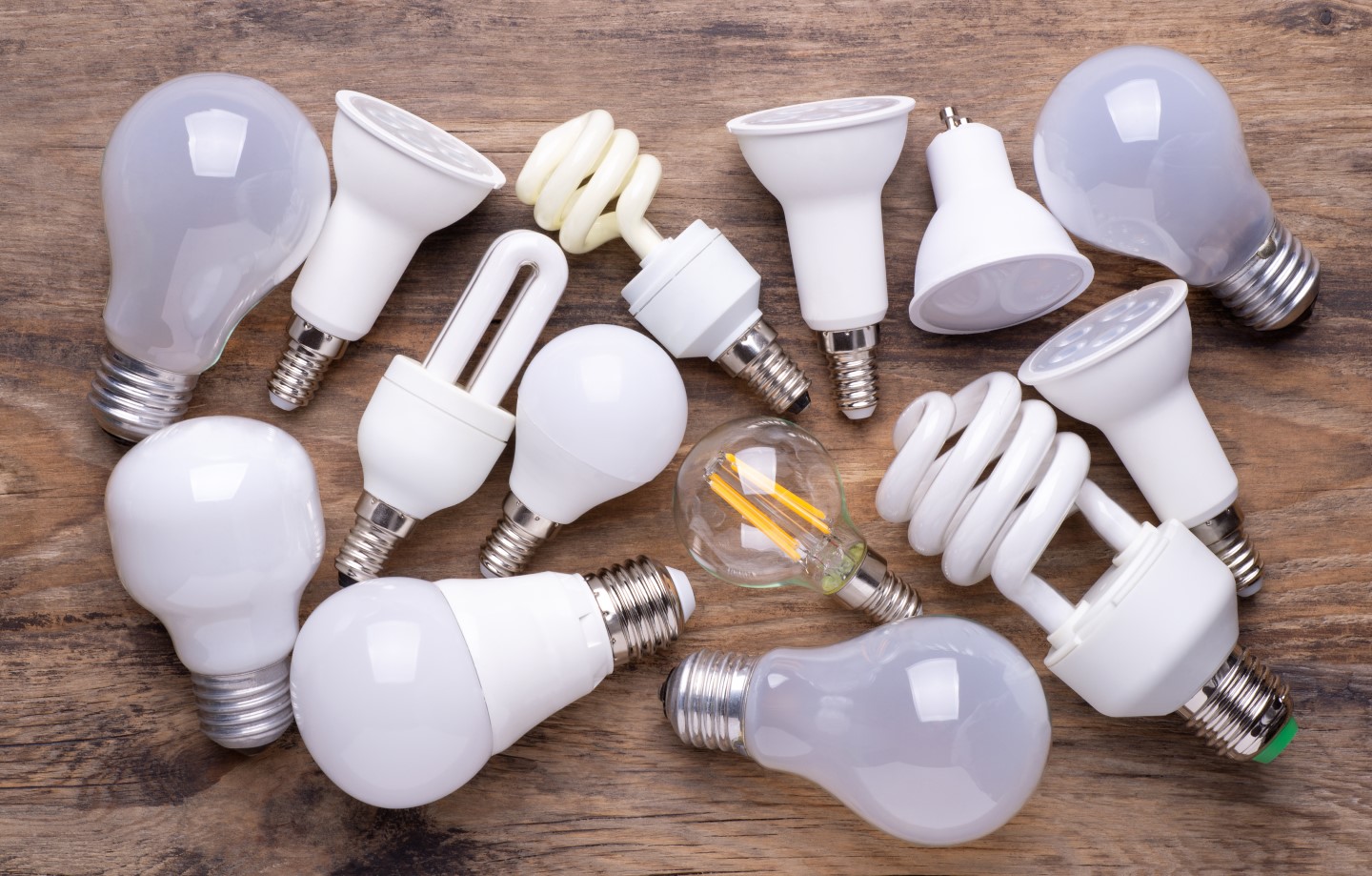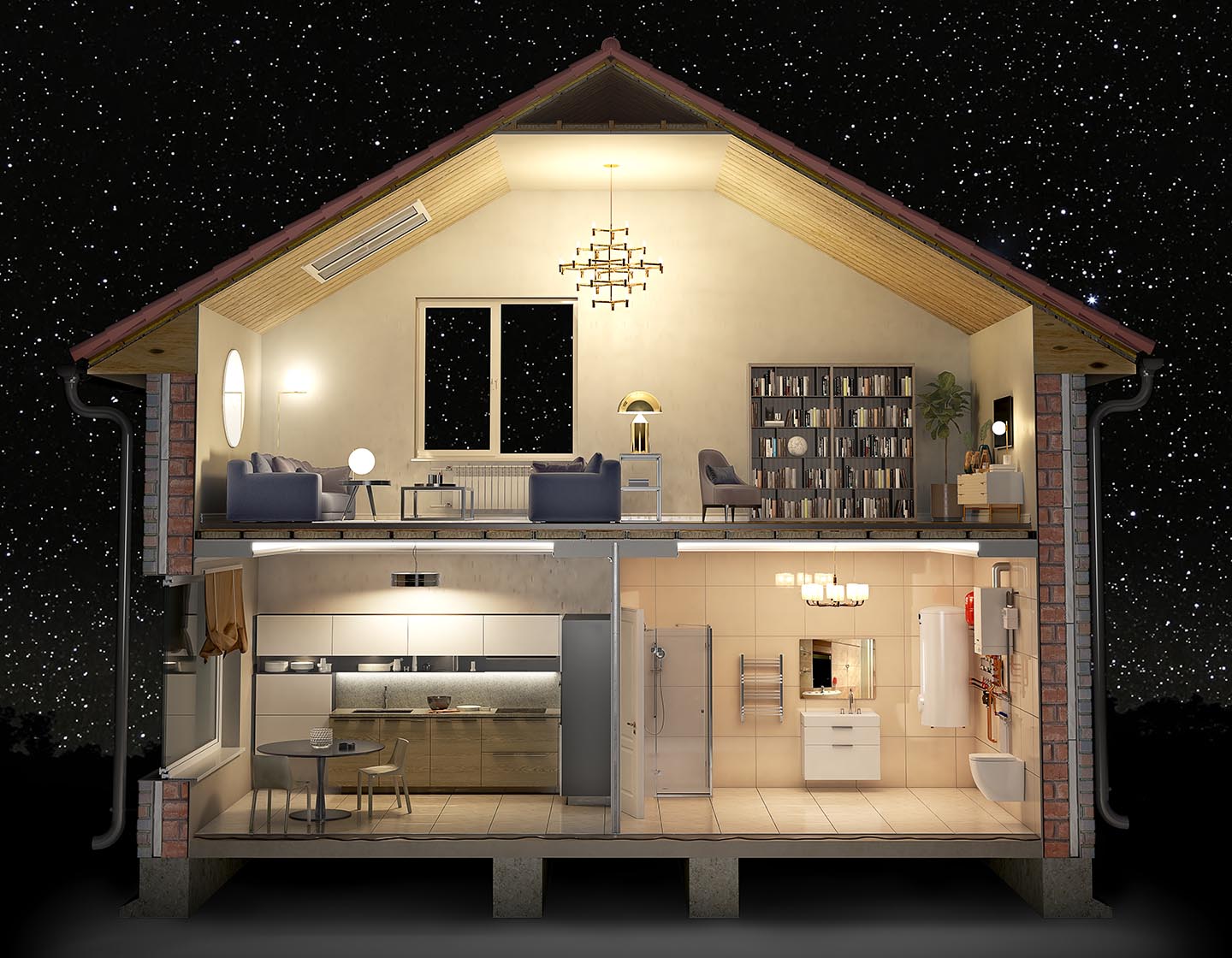Colour temperature explained
When you buy an LED lightbulb it’s pretty essential just to check the details to find out what the colour temperature is – but what exactly is “colour temperature” and why is it important?
Hello Kelvin
The last thing we want when we buy an LED bulb is having to return it because the light is just not what we wanted in our lounge, kitchen, bedroom, bathroom or wherever in the home. So, knowing what colour temperature is right for any of those spaces is very important.
Just a few years ago, we would buy a filament lightbulb or halogen and mainly just check its wattage, figuring that if we wanted a gentler, warmer light then a lower wattage would be good, while 100 watt bulbs and higher would give us bright light.
Now it’s important to check out the range of measurements given with LED bulbs. When you look for an LED lightbulb, you will see that the colour temperature is given in Kelvins, which is a numbered scale that can be applied to any light source, from a candle to a streetlamp for example.
The Kelvin scale will give you information on the quality of light that the LED bulb you are thinking of buying will provide and what you should expect in terms of the colour and ambiance it would help to create.

Forget about heat
Every light source has unique characteristics and a range of measurements, with Kelvin degrees being an important part of the mix. Brightness, measured in Lumens, is another key element. But for now we’ll focus on the Big K – Kelvin.
Colour temperature is not about heat in the general sense we think of – how hot or cold our surroundings are – but a measurement of the colour of the light that is produced by the LED bulb. On the Kelvin scale, as you move higher, the light will be “cooler”.
So, if you want a warmer, and very relaxing atmosphere, then you would opt for a lower colour temperature. And if you are looking for an energising light then you would go further up the K scale.
Clearly, the decisions on what colour temperature you choose is very much a personal preference and how you like your spaces lit to suit your moods and design style. In general, you would have three main choices in LED light bulbs: warm white, cool white, and daylight.
One smart way of gaining complete control over your lighting is with bulbs like the Philips Hue LED range. You can select the colour temperature from 2200K – 6500K and other elements using your smartphone.

Warm white
Warm white LED bulbs will generally comes with colour temperatures in a range between 2700K and 3500K. The warm tones of this light range are well suited to many spaces in the home and tend to enhance the cosy, earthy tones – yellow, orange, red – that many of us favour. The 2700K measure, for example, would give you a type of light very similar to the amber glow of a flame.
Warm light works really well in living rooms, dining rooms and bedrooms as it creates a softer ambiance that is easy on the eye. You would also find LED lights in the 2700-3500K range being used in restaurants and bars because they help to create a relaxed, friendly and intimate environment. It’s also true that warmer light helps us look better – when we’re allowed back into these spaces!
Cool white
It might be that your personal taste runs to cooler colours, those with a lot of blues, greens, and whites, and here the higher colour temperatures can help to enhance the settings. So this colour temperature should enhance a modern home with contemporary design and furnishings.
A cool white light measures between 3,100K-4,500K with the overall effect being clean and refreshing and that’s one reason why fixtures with 4000K colour temperatures are often used as task lighting in offices and for under-cabinet lighting, as well as hobby rooms and studies.
It’s also true that we often perceive higher colour temperatures to be brighter and that the cooler light is cleaner. This K range makes colour variations more apparent and it also can highlight any blemishes and imperfections, so it’s useful for makeup lighting and in areas where cleanliness is essential.

Daylight
Also known as “full spectrum”, daylight colour temperatures in general range from 4600K-6500K. LED fixtures in this range will give you a crisp, natural light that is near to the colour of a clear sunny day. It’s unlikely that you would install full spectrum LED lighting in most rooms in your home although feature areas in the bathroom, the home office space and/or garage can benefit.
Recently, there has been a move in some offices to daylight LED fixtures as these have been associated with higher levels of productivity, while you will also find full spectrum lighting in hospitals, museums, and jewellery shops.
While the light at the top of the K range can often have a distinctive blue cast which some people find a bit harsh can seem harsh, it is effective for focused tasks like reading or intricate work as it can help concentration.
Conclusion
Understanding colour temperature is crucial in selecting the type of lighting we want for our work spaces and at home. While wattage equivalent might give us a small clue, knowing what level of Kelvin is right for the specific task is the key to successful lighting.